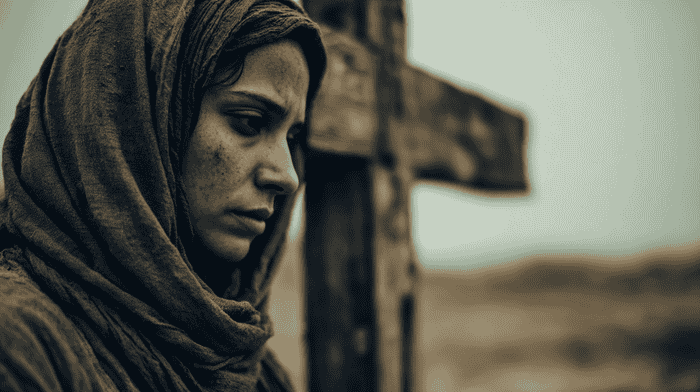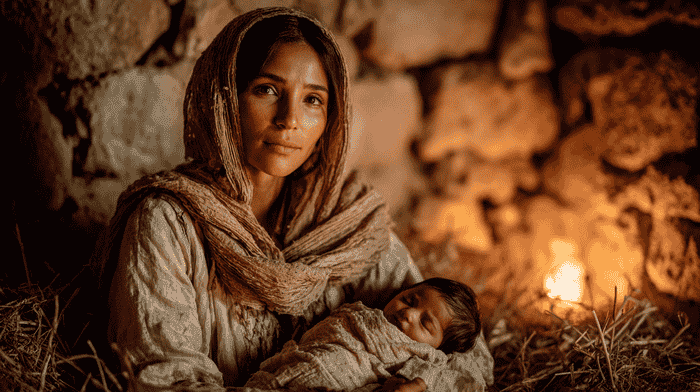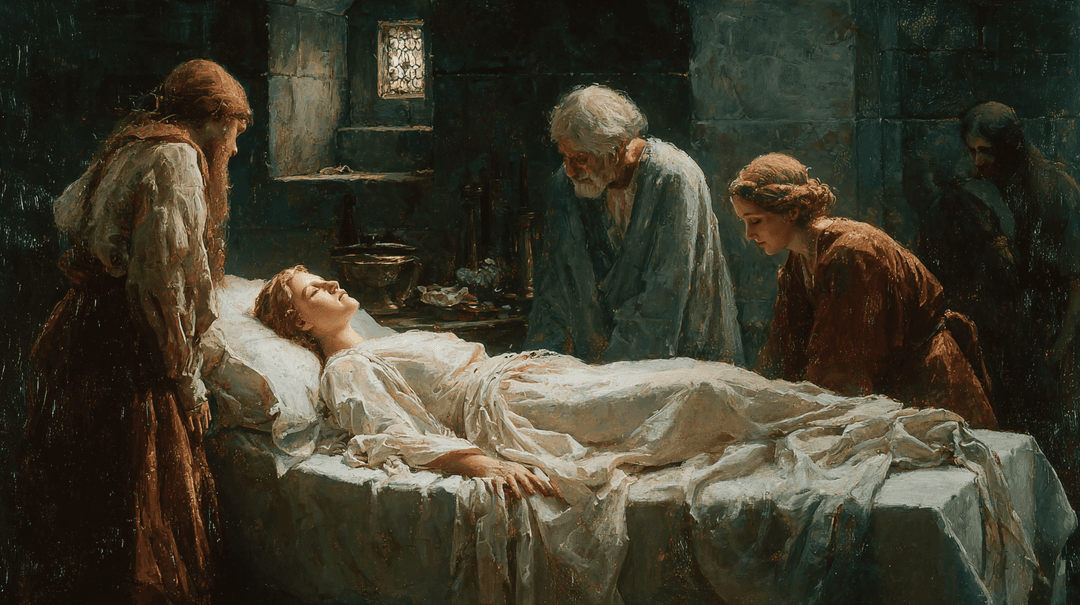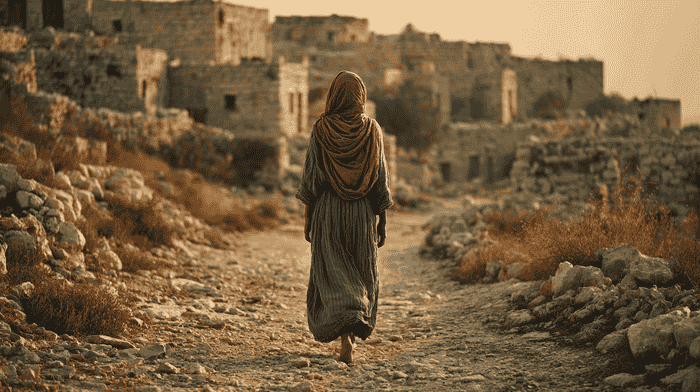Who Was Mary, the Mother of Jesus?
Mary, the mother of Jesus, known to millions as the Virgin Mary, the Blessed Mother, or simply Mary of Nazareth, is one of the most pivotal and revered figures in the entire Scripture.
There are few details about Mary's early beginnings found in the New Testament. She is first introduced in the Gospel of Luke, where God sends the angel Gabriel to Nazareth to tell her: "Greetings, favored one! The Lord is with you” (Luke 1:28, NRSV-CE).
Mary was young, likely a teenager, and, at first, she thought she would be unworthy of being chosen by God. But the angel reassured her: "Do not be afraid, Mary, for you have found favor with God" (Luke 1:30, NRSVCE).
That is when she proves herself to be wiser than her age. After pondering the angel's words, she gracefully replied: "Here am I, the servant of the Lord; let it be with me according to your word" (Luke 1:38, NRSVCE).
Mary’s willingness to accept God’s plan (even without knowing what it would cost her) has inspired Christians for centuries. She wasn’t a passive figure. She asked questions. She thought deeply. But she still trusted.
Her role in Jesus’ life wasn’t only biological, but also spiritual, maternal, and deeply theological. The early Church called her Theotokos, or “God-bearer,” not to place her above Jesus, but to affirm that the child she carried was fully divine.
Biblical scholars and theologians have drawn powerful connections between Mary and symbols from the Old Testament.
For example, in his book Jesus and the Jewish Roots of Mary, Brant Pitre compares her to the Ark of the Covenant. Just as the Ark carried the stone tablets of the Law, Mother Mary carried the Word made flesh (John 1:14). The imagery would have been clear to early Jewish Christians.
Pitre also points out how early Christians saw Mary as the New Eve. Where the first woman chose disobedience, Mary chose trust and surrender. In her, the pattern of the fall begins to reverse.
But Saint Mary wasn’t only important because of what she did in that one moment. She stayed with Jesus through His entire life, from the manger to the cross.
Her song, the Magnificat (Luke 1:46–55), reveals her as someone deeply rooted in Scripture and in God’s justice. She was humble, but not timid. Devout, but not naive. She wasn’t sinless by her own strength, but rather her greatness came from the God she trusted completely.
So, who was Mary, mother of Jesus? She was a young woman from an obscure town who said “yes” to God and lived that “yes” for the rest of her life. Her story is one of courage, trust, and steady faith, and it’s a story that still speaks today.
How Old Was Mary When She Had Jesus?
The Bible doesn’t give us Mary’s exact age when she gave birth to Jesus, but we can piece together a likely answer by looking at the historical setting. Most scholars think she was probably around 13 to 15 years old.
That might seem shockingly young to us now, but in first-century Jewish culture, it wasn’t unusual. Girls were often engaged shortly after puberty, and starting a family early was simply a part of life.
That context helps us understand the culture, but it doesn’t make Mary’s story any less extraordinary. A teenager, visited by an angel, told she would become the mother of the Messiah. There’s no sign she ran or hesitated. She listened, she asked one honest question, and then she said yes.
It’s hard not to pause there. Plenty of adults would have struggled with that kind of news, but Mary, still so young, responded with a kind of calm faith that feels both simple and incredibly deep.
That’s part of why she’s remembered not just as Jesus’ mother, but as someone who modeled trust in God in the face of the unknown. Her age tells us something about the world she lived in. Her response tells us something about her heart.

Get Closer to God Today
4.9
Average Rating
|Over 5 Million Downloads
Why Is Mary Called the Mother of God?
The phrase “Mother of God” might sound strange at first, even a little confusing. After all, Mary didn’t create God or come before Him. So what does it actually mean?
It comes down to what Christians believe about Jesus. From the earliest days of the Church, believers have held that Jesus wasn’t just a good man or a prophet. He was fully human and fully God, all at once. When Mary gave birth to Him, she wasn’t just giving birth to His human side.
She was giving birth to a person who was, from the start, both divine and human in one. That’s why the Church came to call her the “Mother of God.” Not because she’s the source of God’s divinity, but because the child she carried truly was God in the flesh.
This was officially affirmed in the year 431 at the Council of Ephesus, when Church leaders wanted to make it clear that Jesus wasn’t two separate beings, but one person with two natures. Since Mary gave birth to that one person, the title made sense.
It’s also rooted in Scripture. When Elizabeth sees Mary in Luke 1:43 (NRSVCE), she asks, “Why is this granted to me, that the mother of my Lord should come to me?” That word “Lord” (Kyrios in Greek) was often used for God Himself. So even early on, people recognized that there was something divine about the child Mary was carrying.
Some Christians, especially in Protestant circles, have shied away from the title, worried it might place too much focus on Mary. But it’s worth noting that Reformers like Martin Luther and John Calvin actually accepted it. For them, “Mother of God” was about defending the truth of who Jesus is.
At its core, the title isn’t about Mary’s status. It’s about protecting the mystery of the incarnation: that God chose to become human, and He did so by being born of a woman.
Mary’s Role in the Life of Jesus
Mary appears throughout the Gospels, not only at Jesus’ birth but also at significant turning points in His ministry:
- At the Wedding at Cana, she prompts Jesus’ first miracle (John 2:1-11).
- At the foot of the Cross, she stands with Him in His final hour (John 19:25-27).
- In the Upper Room, she prays with the apostles after the Resurrection (Acts 1:14).
Was Mary Sinless?
This has been a key point in Catholic teaching, which holds to the Immaculate Conception, the belief that Mary was kept free from original sin from the moment she was conceived. Luke 1:28 is often used to support this idea.
Most Evangelical Christians, though they honour Mary, don’t agree with that view. They point to verses like Romans 3:23, which says that all have sinned, without exception.
Some scholars, like Brant Pitre, argue that Mary’s holiness isn’t just about biology but about her role in God’s plan. He draws a connection to the Ark of the Covenant in Exodus, a sacred vessel that couldn’t be touched by anything unclean.
Whether or not you accept the doctrine, Mary’s life still speaks of a remarkable kind of purity and faithfulness.

Get Closer to God Today
4.9
Average Rating
|Over 5 Million Downloads
Mary and Joseph: A Holy Union
Joseph is often overshadowed in Marian discussions, but his role is crucial. Matthew 1:19 describes him as a righteous man who initially planned to divorce Mary quietly, not wanting to expose her to public disgrace. After receiving divine assurance in a dream (Matthew 1:20-21), he embraces his role as Jesus’ earthly father.
Together, Mary and Joseph model obedience, humility, and faith, traits that made their household a training ground for the Messiah.
Mary in Early Christianity
The early Church revered Mary not only as the Virgin Mary, but also as a symbol of the Church itself.
In Revelation 12, a woman clothed with the sun gives birth to a male child destined to rule the nations, widely interpreted by Church Fathers as referring to both Mary and the Church.
Brant Pitre’s research shows that Mary was seen from early on as more than just Jesus’ mother. Church Fathers such as St. Irenaeus and St. Ephrem called her the New Eve, emphasizing her cooperation in salvation history. In the second century, prayers like the Sub Tuum Praesidium already invoked her intercession.
The Death and Assumption of Mary
There’s no description in the Bible of how or when Mary died. Scripture is silent on that part of her story, so most of what we know comes from tradition.
In Catholic teaching, Mary was assumed into heaven (body and soul) at the end of her life. The belief was made official in 1950, but it had been part of Christian thought for centuries. The idea was simple: the woman who carried the sinless Son of God shouldn’t undergo the usual decay of death. Early Christian writings and Eastern liturgies reflect that same conviction.
Protestants generally don’t accept the Assumption as doctrine, though many still believe her life ended in faith and closeness to God.
As for the place of her death, accounts vary. Some early sources place it in Jerusalem, where a tomb attributed to her can still be found. Others say Ephesus, where tradition holds she lived with the Apostle John after Jesus’ death.
There’s no way to know for sure. What’s consistent is the tone in which her passing is remembered: with reverence. Not just because she was Jesus’ mother, but because her life, and Mary’s death in the Bible, meant something to the people who followed after.
Get Closer to God Today
4.9
Average Rating
|Over 5 Million Downloads
Mary and Jesus: A Unique Relationship
No one knew Jesus like Mary. From the angel’s announcement to the empty tomb, her relationship with her son was deep and mysterious. Luke 2:19 tells us she “treasured all these words and pondered them in her heart” (NRSVCE). This pondering makes her the first theologian of the New Covenant.
Jesus and Mary share not just a biological bond, but a spiritual one. Her faith did not rest in what she saw, but in what she believed. At Cana, she simply says, “Do whatever He tells you” (John 2:5), a timeless instruction for all disciples.
Why Mary Matters Today
Mary matters today because she was the chosen vessel for the incarnation of Jesus, fulfilled prophecy, and exemplified faith, obedience, and humility. Her life and example continue to inspire Christians to trust in God’s plan and to respond with faith and devotion, regardless of circumstance.
Get More Support – Bible Chat App
Want to explore more about Mary’s role in the Bible or what it means that she’s called the Holy Mother of God? The Bible Chat App can help. From answering questions like ‘how old was the Virgin Mary when she had Jesus?’ to explaining complex doctrines, Bible Chat is your go-to resource.
📱 Download the app today from Google Play or the Apple App Store.
Get Closer to God Today
4.9
Average Rating
|Over 5 Million Downloads
Conclusion
From the angel’s startling announcement in Nazareth to her quiet presence in the Upper Room after Jesus’ resurrection, Mary’s story is one of trust, obedience, and profound faith. The Bible presents her not as a distant figure shrouded in mystery, but as a real woman who said “yes” to God in the face of uncertainty. She wasn’t perfect by her own merit, but she was favored by God and responded in humility and courage.
As believers, we are invited to see in Mary a mirror of the kind of trust and surrender that God calls us to. Her life reminds us that saying “yes” to God, even when we don’t fully understand, can change everything. In her story, the Bible offers us not just a glimpse of Jesus’ beginnings, but a lasting example of how to walk by faith, not by sight.
References
- The Holy Bible, New Revised Standard Version Catholic Edition (NRSVCE)
- Brant Pitre, Jesus and the Jewish Roots of Mary: Unveiling the Mother of the Messiah. Image, 2018
- GotQuestions.org, What does the Bible say about the virgin Mary
- John MacArthur, The Gospel According to Jesus
Image Sources: Midjourney.com










